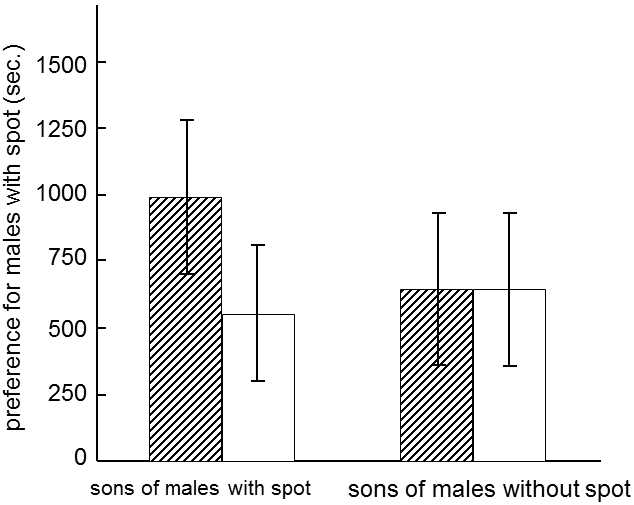XV.5.3 Sexual selection can induce hypertrophy of traits originally used to identify members of the same species
In sexual reproduction, an individual must be capable of identifying members of its own and foreign species. To identify individuals of the opposite sex of its own species, every species uses certain key traits, differentiating the particular species from related species. The traits that individuals use for this differentiation can be very different than those that a taxonomist would use.
If, for example, females identify males according to the color of a certain spot on their heads, then males with more striking or larger spots will obviously be identified more readily as members of one’s own species and will sooner gain the opportunity to reproduce. This can, once again, start a Fisher cycle of positive feedback and simultaneously decide which trait will become a subject of sexual selection.
In most species, the means of identifying the members of one’s own species is inborn. However, at least in some species, the species-specific traits according to which females select a sexual partner can be fixed by learning, specifically imprinting (see XVI.2) (Fig. XV.6). In this case, the taste of the females and thus the preferred traits can be subject to cultural evolution. Cultural evolution can make the mechanism of co-evolutionary lift (XXI.5.6.1) extremely effective and can thus become a sort of motor for repeated speciation.

Fig. XV.6 Acquired preference for species-specific traits. The offspring of Javian munia (Lonchura leucogastroides), birds of the Lonchura family, were brought up by their parents, who had red spots painted on their foreheads. In adulthood, the females (N = 13) preferred males with the same spots (hatched columns) over normal males (white columns). Control females (N = 11) brought up by normal, unspotted parents did not exhibit such a preference. According to Plenge et al. (2000).
